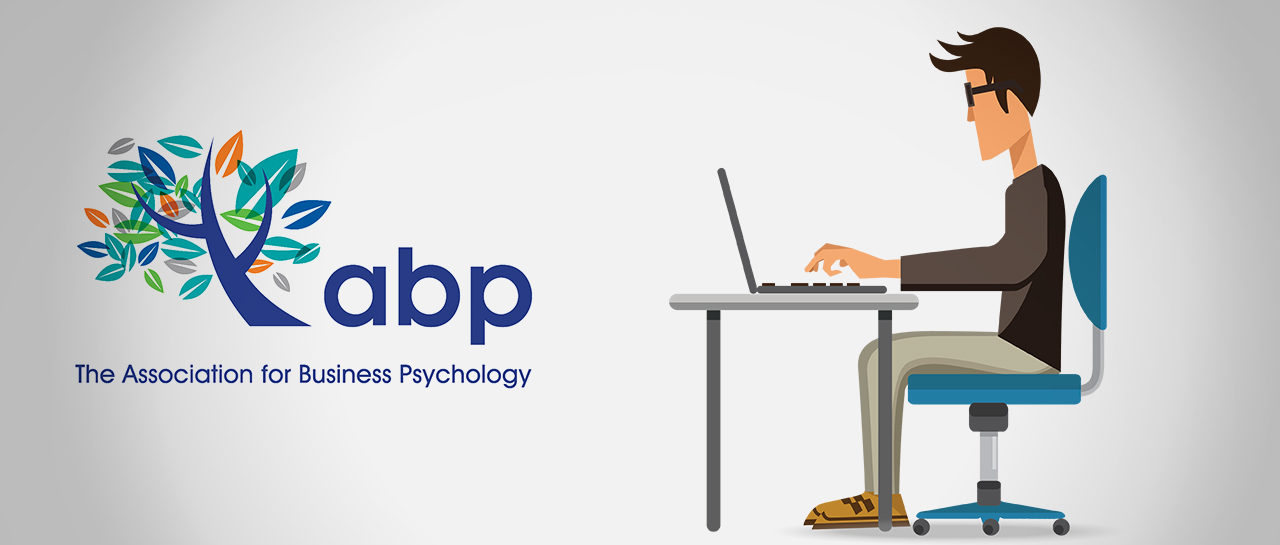Authored by Certified Business Psychologist Laura Howard. Certified Business Psychologist, Laura Howard, reflects on the webinar she recently delivered to ABP members. Below she outlines the main findings of her published research uncovering systematic barriers women face when being authentic as leaders. Importantly, she gives…

How is Artificial Intelligence rapidly changing the Future of Work?
Devyani Vaishampayan, Managing Partner, HR Tech Partnership
We were indeed privileged to be able to welcome Devyani Vaishampayan, Managing Partner of HR Tech Partnership to the first event of 2020 in London, held at the University of Westminster. While there is a great deal of material about the digital revolution and Artificial Intelligence, Devyani provided a comprehensive overview of the impact of AI and digital to the workplace while providing pointers to areas where as business psychologists we need to have awareness of key developments.
Devyani’s current venture invests in AI based HR startups and runs a Human Capital Digital Innovation Hub yet her earlier experience has been as a CHRO has been in large corporates like Citibank, AT&T and Rolls Royce in international roles. This gives her a unique but practical perspective around how Artificial Intelligence can be leveraged for enhancing the people agenda.
Her presentation covered a wide range of topics
- Why is the Future of Work assuming such a huge increase in level of importance?
- How is the world of Digital impacting the workplace? Where is the biggest impact due to changes in technology?
- What is the Impact on Jobs?Which jobs will be created and where will future skills be required?
- How do HR professionals see the evolution of the digital landscape and how are they reacting to it?
- How can we as managers and psychologists become more familiar with workplace digital?While awareness of specific changes can help, a future perspective requires a broader overview and this presentation addressed this.
To set the scene, some quick facts are useful.
* According PA Consulting 65% of jobs in 2030 will not have existed in 2020.
* 91% of millennials will have changed jobs every three years, effectively involving 15-20 employers over the course of each career. This has huge impact on the extent to which companies invest in training and development.
* 91% of employees like to learn at their own pace. This has a considerable impact the kind of training delivered and when.
It therefore follows that the onus is on organisations to provide employees with training and development which they feel they want and need rather than what the organisations are used to providing. This requires a huge cultural shift.
Trends
* Most industries are now facing fast changing business models. Nowhere is this more stark than in industries where training is critical and a long term problem.
An example is Taxi Drivers. In this high turnover activity, the impact of technology has made a huge difference, facilitating new levels of expertise. In motor manufacturing, transport, warehousing and distribution, or indeed any area of activity with a significant mechanical or physical component, robots or similar forms of automation have facilitated more streamlined methods of working. It is important to look at the impact of technology our respective industrial sectors are facing as a key to overall trends..
* The growth of the Gig Economy. Technology has facilitated the need for people to be not location and time specific at work. In some activities there is no need to be in some location all the time, rather, they need to be available in some location and in some context some of the time where a specific skill is required.
The consequence is that Full Time work is disappearing. 20 years ago 80-90% of people were in full time employment Today, there are only 50-70% of the working population in full time employment. In 10 years time the figure will be less than 30%, driven by areas where automation has the most far reaching impact.
One of the key economic and political challenges is that we are not preparing for this this change, exacerbating uncertainty and dissatisfaction. Processes and times of activity are still geared towards people working full time in activity during a traditional working day.
* Employee expectation of being a consumer
By contrast however, employees want the experience and benefits of being a consumer anytime and anywhere. They want personalised choices and the opportunity to engage in “designer” thinking. To meet these choices, organisations need to use big data and analytics which play an increasingly large part in satisfying emerging consumer preferences. This requires direct information which is used in a very different way and in turn requires new learning and development solutions. AI and data analytics provide the template for such solutions and for meeting these new consumer expectations.
* Compare jobs and skills and provide idea of skills gaps.
Linking into the previous point, analytics can help to anticipate skills gaps and requirements. Linking into these can help organisations develop training plans and and at the same time link into and provide access to thousands of other training programmes, thereby enabling personalised training plans, meeting the need for the employee to drive the process and be “in charge”.
How is digital going to affect the workplace?
The impact of technology is not new. In 2018 , 29 % of total “task hours” were performed by machines . However, if we look at the last 30 years there have been three key ‘turning points’
* First Wave: the World Wide Web – which revolutionised how employees could communicate across the globe
* Second Wave: the use of Mobile for mass communication
* Third wave – MAchine learning and Artificial Intelligence
We are about to witness a revolution where technology shapes the coordination of work, e.g. AI powered recruitment, talent management, ever more detailed performance management, and information on individuals’ health and wellbeing. AI will make the difference because it will be “Intelligent” rather than replicating. Systems will “learn” with use. They will provide information on individual and team performances, from prescribing better methods of working to preventative perspectives such as health and safety. They will “Nudge” you, and adapt to reward you.
Examples of currently available data driven solutions in the people tech space ( our investments) are:
Recruitment Smart – An AI driven CV screening solution that screen upto a billion CV’s per day
Trackactive – A chatbot assisted , AI based platform to help employees with musculoskeletal pain
Motivii – A Machine learning based solution for employee engagement
Rotageek – A AI based solution for employee scheduling particularly used in the retail industry
These were among the 3000 + digital start ups in 2019 alone.
Solutions are successful where technology enables workers to exchange information and collaborate more easily and where it is linked to “Augmentation”, reducing the tedious part and expanding the capability of the Job. Examples VR for onboarding, or chatbots at call centres, The next wave of solutions will focus on the use of data to produce intelligent anticipation of what is required and completion of relatively routine tasks, rather than human input into administration.
Critics suggest that job substitution is the curse and source of a lot of misinformation feeding fear amongst employees with little control over their future. However evidence suggests that this is not happening in a big way: in reality employees have more choice than ever for upskilling and retraining. While no would dispute that AI causes disruption, Ocado’s automated warehouse has demonstrated that changes when well managed can be positive when embraced: it is all about employee appreciation that this change is about increased data transfer and communication and improved employee engagement.
“People” Areas seeing Digital Disruption
* Recruitment and assessment – changes are in the use of voice recognition to predict anticipated work performance and flexibility, CV analysis and personality profiling.
* Employee Engagement / Coaching. The breakthrough here is that real time data on an employee can be obtained without asking the employee for data. The future is approaching rapidly where sensors can map motion levels and activities of teams and individual to view productivity. This has already happened at retail resulting in customer experience improvements. Advances in mobile technology can further facilitate rapid transfer of information.
This area is perhaps the most difficult to manage because of sensitivities and potential restrictions in personal input. Who will decide the method of working? What are the ethics and implications of the use of such personal data? What are the implications for wellbeing and increased stress at work?
* Learning and development. E-learning has been used now for some time. However, what is new here is that the learning can be tailored to the individual, who can demand and control the content and timeframe for individual learning activities.
* Monitoring Health and Wellness at work. A practical solution recently developed is a digital solution for monitoring and managing menopause.
* GiG economy. Needless to say, applications here can be widespread and could include identifying those with appropriate skills, market places connecting candidates to employers directly and new hire induction and onboarding.
* Culture management in organisations. There will be a transformation in talent management and performance, which needs quick real time feedback and which currently not provided
* Pay and Benefits – using Blockchain for secure payments
The Impact: Organisation Issues to be managed
Organisations need to develop clear strategies for handling the following, inter alia:
* Workforce Composition and Organisation Design.
* Jobs losses and redundancy
* Upskilling. How to upskill existing workforce to reduce costs and pain of redundancy.
* Data Privacy / ethics. To what extent can personal data be used by others. Policies and process have become hugely important as organisations can carry huge liabilities.
* Leadership Capability and Culture
Most importantly, what will be the impact on jobs? To quote Andrew Ng, Stanford University.
“If a typical person can do a mental activity with less than one second of thought, we can probably automate it using AI either now or in the near future”.
The PwC view on how this will evolve “Who will get impacted by AI” comes to the conclusion is that there will be 3 waves
Wave 1 – early 2020s. Low level repeatable transactional activities will be automated. E.g structured data analysis and clerical activities. Financial Services, Insurance, Information, Communication are industries that will be particularly affected.
Wave 2 – to mid 2020s. Augmentation, where systems are developed which will learn from their “experience”. These include robotic tasks in a semi controlled environment eg the Ocado warehouse at Andover
Wave 3 – to late 2030s This wave includes automation of physical labour and problem solving in dynamic real world situations eg driverless cars
It is worth remembering that the technology for Wave 2 & 3 has already been developed but will become commercially viable and widespread during this period
A PwC report in 2019 predicted that jobs in the following industries will get impacted the most by 2030:
- Transport & Storage
- Financial Services
- All manufacturing sectors
- Health, especially diagnostics and administration.However specialist nursing, carers using soft skills for support and some education provision is least likely to be affected.
On a positive note, LinkedIn predicts the following top 5 emerging jobs for 2020’s
- AI specialists
- Robotics engineers
- Data scientists
- Full stack engineers
- Site reliability engineers
The future of human skills
So, what are humans going to be good for????? The quick answer is that a lot more areas. In the US in the early 1900’s, there were 130,000 telegraph operators. Fifty years on, they disappeared completely. However, the telecommunication industry today employs millions of people – but with a different skill set!
The Job Skills of the future will include
* AI & digital skills, data engineers
* Analytical and Critical Skills. Using analysis to produce insights rather than working in the transactional space.
* Strategy and interpretation. For example, marketing – where are the opportunities and how should it be applied?
* “Judgment application” activities. These include traditional physical skills but which require spontaneous analysis and judgment, such as plumbers, personal care.
* Empathy and communication. Soft skills jobs will be in demand. Doctors may have more linked information but will need to have a more human interface with their patients (who will have higher expectations) . Other examples are Coaches and Mentors
* Creativity. Music and Craft activities will if properly nurtured increase in commercial value.
* Activities with imagination and vision. Activist/pressure groups/speakers
How are HR professionals reacting to this change?
KPMG predicts that 47% of HR leaders are planning an investment in AI for use in HR. However, there is still fear and a lack of understanding amongst HR professionals about the usefulness of AI. The HR TECH Partnership did a global survey of 15,000 HR professionals and found that 55 % felt it undermined the human touch that HR provides. This indicates there is a lack of understanding of the fact that machines and humans need to work together and both are capable of doing different things.
The biggest threat that HR faces is therefore the digital mindset – can we leverage digital technology to enhance our role or do we ignore its advance and get left behind?
Therefore, everyone needs to start getting familiar with AI and Digital. Here are some tips to get upskilled around it:
* Read up on AI and the workforce, take a free or paid course, attend talks and presentations.
– Use free online resources. AIHR based in Netherlands offer a training programme which caters to HR professionals
– Invest in AI based start-ups and see from the inside how AI is capable of innovating traditional processes
* Mentor a start up.
* Become involved in the Human Capital Digital Innovation Hub, run by the HR TECH Partnership. The Hub is a six month program which allows organisations to engage with an AI based talent/employee/HR startup to address a live challenge the organisation is facing. The focus is on learning about digital disruption at the workplace without any pressure of a sale.
Typical problems that corporates address through the Hub are:
- How can I use AI/ Machine Learning to improve the Talent Acquisition/Learning & Development,Culture, Employee Benefits ( or any HR issue)?
- How can I use AI to improve Diversity and Wellness in my organisation?
- How can I upskill my HR team around digital and its impact?
- How can I help HR understand the changing nature of their role ( including issues of data privacy)?
- How can the Hub be used to educate business leaders about the fast changing nature of the ‘Future of Work’?
Corporates have found the Hub useful as a practical way to learn about AI solutions and minimise their risk as there is no pressure of a sale.e Human Capital Digital Innovation Hub is one of the ways in which corporates are trying to experiment, engage and understand digital disruption to the workplace. We do this by working on a live current challenge your organisation is currently facing. It is a six-month programme where we help an organisation/HR team source a digital or AI ‘talent/employee/HR’ based start-up, experiment with using it through an actual pilot (of a innovative AI/Machine learning based learning solution) and facilitate a monthly learning session. The focus is on learning about digital disruption without the pressure of a sale.
Conclusion
A suitable conclusion can be enshrined in a recently released Capita report which confirms the views of most people in this sector, that new tech will bring forward new opportunities. It’s conclusion was that fear is unfounded.
* by 2025 algorithms and intelligent machines are expected to create 133 million jobs worldwide but displace 75 million jobs. This still means a whopping 58 million new jobs will be created.
* Most ( 51% ) of employees are positive about automation, but understand that relevant upskilling is essential.
* Implementation has to be practical and has to be application driven, with the technology as the facilitator.
RT
21 January 2020



